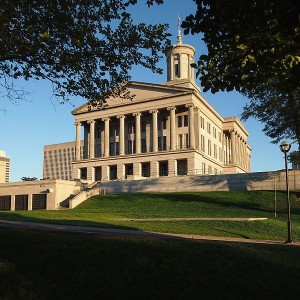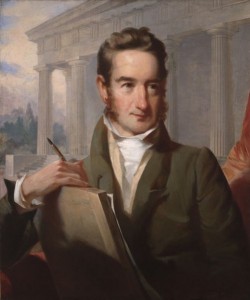
Tennessee Capitol Building By Luiz1940 (Own work) [CC-BY-SA-3.0 (http://creativecommons.org/licenses/by-sa/3.0)], via Wikimedia Commons
Besides the historical significance of the state judiciary hearing cases in the capitol at the invitation of the chief executive during the legislative session, it is interesting to note that in this configuration, the justices are seated on an only slightly elevated “bench,” placing them at almost-eye-level with the presenting attorneys. Newer (20th and early 21st century) courtrooms generally place judges as far away and as high above the attorneys, parties, jurors and public as reasonably possible.
The pictures also illustrate the magnificent simplicity of the capitol’s Greek Revival ionic temple design—the images marred only by the court’s barricade and the Tennessee State Bicentennial Portrait.
Although the Tennessee State Capitol’s prominence within the Nashville skyline has diminished over the past several years with the development of downtown high rises, from an architectural standpoint, the building remains the city’s most valuable structure.The capitol’s architect William Strickland was one of the driving forces of the Greek Revival movement in the United States during the early mid-1800s. While Greek Revival architecture was originally an aspirational expression of individual civic virtue and democratic government, it later became associated with more nationalistic ideals – probably about the same time judges and other government officials began to be placed on a pedestal.
Here is an excellent blog post with more photos on Tennessee’s “Temple of Democracy.”







